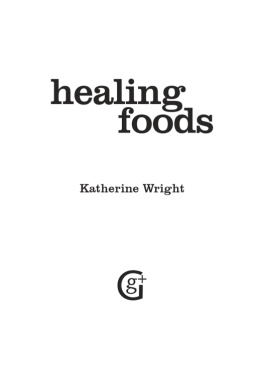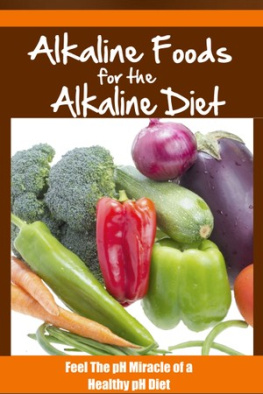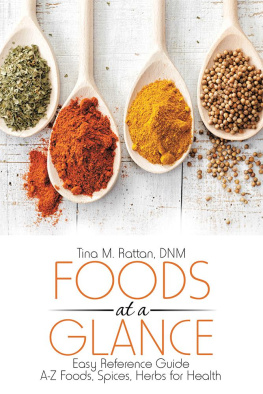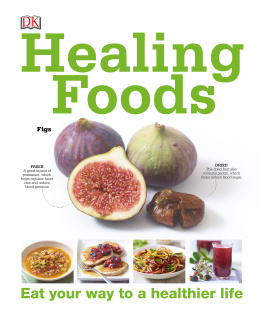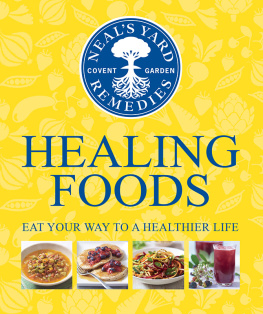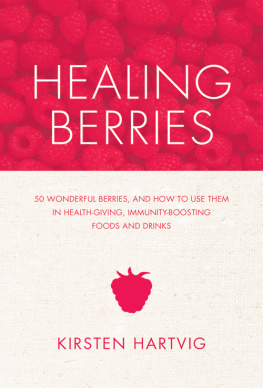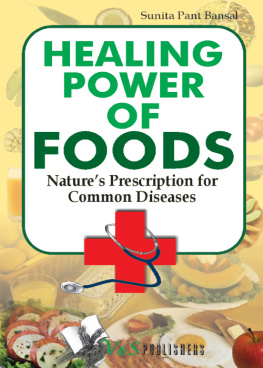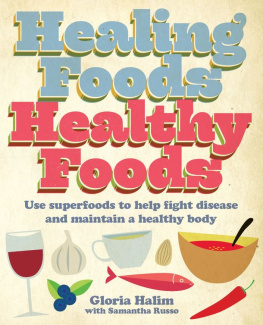Katherine Wright - Healing Foods: Descriptions; Properties; Health Benefits
Here you can read online Katherine Wright - Healing Foods: Descriptions; Properties; Health Benefits full text of the book (entire story) in english for free. Download pdf and epub, get meaning, cover and reviews about this ebook. year: 2015, publisher: Waverley Books, genre: Children. Description of the work, (preface) as well as reviews are available. Best literature library LitArk.com created for fans of good reading and offers a wide selection of genres:
Romance novel
Science fiction
Adventure
Detective
Science
History
Home and family
Prose
Art
Politics
Computer
Non-fiction
Religion
Business
Children
Humor
Choose a favorite category and find really read worthwhile books. Enjoy immersion in the world of imagination, feel the emotions of the characters or learn something new for yourself, make an fascinating discovery.
- Book:Healing Foods: Descriptions; Properties; Health Benefits
- Author:
- Publisher:Waverley Books
- Genre:
- Year:2015
- Rating:4 / 5
- Favourites:Add to favourites
- Your mark:
- 80
- 1
- 2
- 3
- 4
- 5
Healing Foods: Descriptions; Properties; Health Benefits: summary, description and annotation
We offer to read an annotation, description, summary or preface (depends on what the author of the book "Healing Foods: Descriptions; Properties; Health Benefits" wrote himself). If you haven't found the necessary information about the book — write in the comments, we will try to find it.
Explains the health-enhancing and healing properties of a wide range of foods.
Healing Foods: Descriptions; Properties; Health Benefits — read online for free the complete book (whole text) full work
Below is the text of the book, divided by pages. System saving the place of the last page read, allows you to conveniently read the book "Healing Foods: Descriptions; Properties; Health Benefits" online for free, without having to search again every time where you left off. Put a bookmark, and you can go to the page where you finished reading at any time.
Font size:
Interval:
Bookmark:
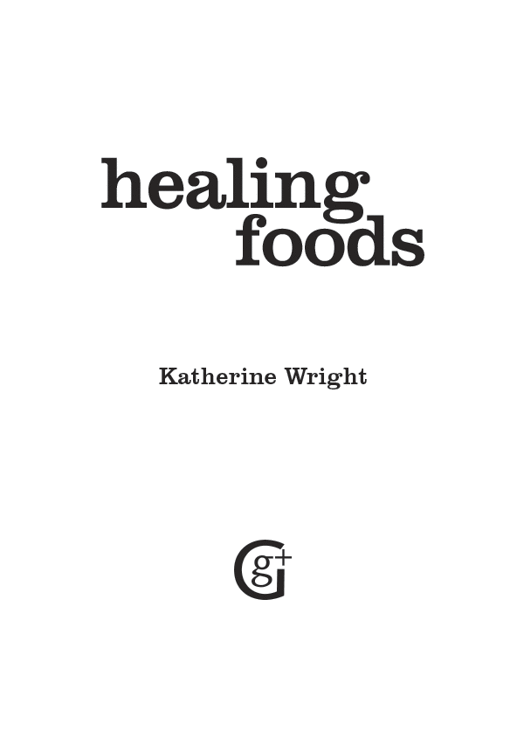
In the past, knowledge about the healing properties of foods could only be gained through observation. Today, modern analysis and study has been able to unravel the biochemical/cellular action of foods, providing scientific evidence to support the observations of the past. This has proved to be particularly interesting and rewarding with regard to the study of herbs and medicinal plants and a great deal of scientific research continues to be directed towards discovering the healing properties of these foods.
During the 20th century, great advances were made in medicine and science, and for a time it seemed that these held the answers to all human ills. Previously feared infectious diseases were conquered through a combination of vaccination and treatment with new antibiotic drugs. Also, doctors and surgeons were able to harness the products of a second technological revolution (in areas such as robotics, lasers, computers, microsurgery, cryosurgery, advanced diagnostic and scanning equipment, etc.) to treat and cure people in ways that were previously unimaginable. There is no doubt that these advances have made and will continue to make an enormous difference to our health and quality of life. In the event of illness, our chances of survival are much improved and more people than ever before are living to an advanced age.
However, there has also been a growing realization that science and medicine do not have all the answers and that each individual can influence his or her own health through simple lifestyle choices. The most important choice to make is deciding whether or not to smoke as cigarettes remain the principal cause of premature and entirely preventable death in the United Kingdom. Smoking primarily causes death from cancer and heart disease but it is also responsible for many other serious and sometimes fatal respiratory illnesses. Lung cancer, which is responsible for a fifth of all cancer deaths, is almost entirely attributable to smoking.
When it comes to a healthy lifestyle, there are two other areas of equal importance that lie within individual control diet and exercise. This book deals with diet and, more specifically, looks at the health-enhancing and/or healing properties of a wide range of foods, explaining why these should be included in the daily diet.
There is universal agreement among nutritionists, doctors and scientists about the importance of diet in both the incidence and prevention of disease. It is also accepted that the type of diet prevalent in the UK and many other Western countries is unhealthy and responsible not only for diseases that cause disability and premature death but also for an epidemic of obesity and a steep rise in the incidence of non-insulin dependent diabetes mellitus. Although these facts are well known, many people remain confused about what they should be eating. This is partly due to the barrage of sometimes conflicting advice about food which has been aimed at the public in recent years.
It is hoped that this book will help to throw light on the subject. The first section looks at the different elements in food and their role in the human body. The second section, which forms the main part of the book, consists of an A to Z of health-giving and healing foods, describing their essential properties, giving advice on how much should be eaten and providing cooking methods, where appropriate. The entries mainly cover foods in their essential or natural state rather than products or dishes made from them, although these may be included in the description.
Although the A to Z section includes only those foods that are held to have specific health-enhancing properties, this does not mean that foods that are not included are unhealthy or harmful. It is certainly better to eat some things sparingly and in moderation but, above all, food should be enjoyed. There is little point in eating a particular food, however healthy it may be, if you hate every mouthful. Equally, occasional indulgence is not going to cause any lasting harm. There is common sense in the old adage a little of what you fancy does you good!
Starches are more complex carbohydrates built up of long chains of glucose molecules. They take longer to be broken down by digestive processes and hence provide a more gradual and sustained supply of glucose. The body generally contains sufficient reserves of glucose to meet the total energy requirements for one days activity. If there is a lack of glucose, the body is able to manufacture it in the liver from glycerol (obtained from fats) and amino acids (derived from proteins). Conversely, some excess glucose is converted by the liver into the complex carbohydrate, glycogen or animal starch. This is stored in the liver and in muscle cells and acts as a reserve energy store, which is drawn upon when there is a lack of available glucose in the blood.
Processed foodstuffs, such as sweets, biscuits, cakes, chocolates and sauces, consist mainly of simple sugars. These provide the body with energy molecules in the form of glucose but very little else of nutritional value. People in the UK and other Western countries enjoy these highly palatable foods and often eat them to excess at the expense of more helpful foods. Sustained excess consumption of sugary foods leads to the laying down of body fat and is a leading factor in the development of non-insulin dependent diabetes mellitus, tooth decay and obesity.
Font size:
Interval:
Bookmark:
Similar books «Healing Foods: Descriptions; Properties; Health Benefits»
Look at similar books to Healing Foods: Descriptions; Properties; Health Benefits. We have selected literature similar in name and meaning in the hope of providing readers with more options to find new, interesting, not yet read works.
Discussion, reviews of the book Healing Foods: Descriptions; Properties; Health Benefits and just readers' own opinions. Leave your comments, write what you think about the work, its meaning or the main characters. Specify what exactly you liked and what you didn't like, and why you think so.

